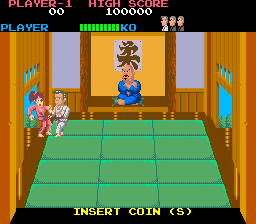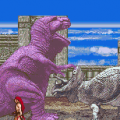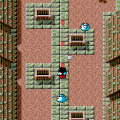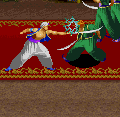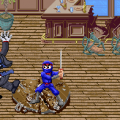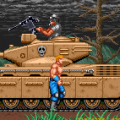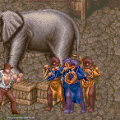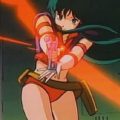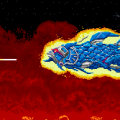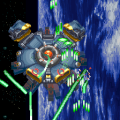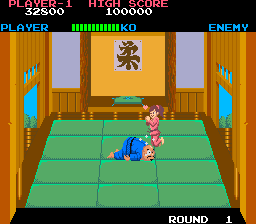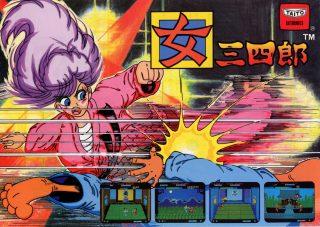
An “onna sanshirou” is a Japanese term for a woman who’s skilled at judo, inspired by the classic novel Sugata Sanshirou. This title refers to Yuki, a high school girl who’s also a judo practitioner, and the first female to lead a fighting game. Players control the hero through eight rounds of combat against assorted combatants and boss characters.
This game hails from 1985, an era before the fighting game genre was established with Street Fighter II, with its contemporaries including games like Data East’s Karate Champ and Konami’s Yie-Ar Kung Fu. Even in this context, Typhoon Gal plays differently than these, given its focus on judo. There are two buttons, attack and jump, and various unique moves can be used in tandem with a joystick direction. Yuki can push away her opponents to line up her kicks, elbows and punching. The jump button can be used to perform headbutts and various throws, in addition to a very high jump. No opponent in the game can be beaten without throwing them to finish them off.
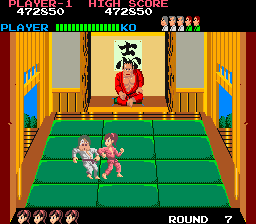
The game starts by showing Yuki approaching a tree in a schoolgirl outfit. She disappears behind it, her clothes fly off to the left and she emerges in her pink gi, ready for battle. The odd-numbered stages take place in a dojo, where the boss of that level sits while you defeat his grunts before engaging you himself. The even number stages throw two opponents at you at a time, forcing Yuki through a gauntlet of between eight enemies per stage. Stages two and six occur outside in a grassy field, while stages four and eight occur before a Japanese building. Most stages are palette swaps of the others.
Most of the grunts look similar, sharing only a few different heads and different colored outfits, but the bosses have unique designs. Bocher (Round 1) is a blading chin beard fellow in blue while Hogen (Round 3) is clearly influenced by Hulk Hogan with long blonde hair. Dumpling (Round 5) wears yellow with either blue hair or a turban, and Franky (Round 7) is a muscular version of Frankenstein. While each boss has more health, their move sets don’t vary from the standard opponents, so you can beat them the same way. There’s no ending, as the game restarts at a higher difficulty once you complete the game.

Like many early fighting games, the controls are difficult to understand at first, and the hit detection is rough, particularly given the short range of character attacks and the emphasis on throws. Nonetheless, it’s an important evolution in the history of early fighting games, not only due to its mechanics but also its leading lady. The comical animations also give the game a lot of personality, particularly the pain expressions on your opponent’s faces as you hurl them across the screen. Typhoon Gal came at a time when the Japanese audience was becoming enamored with “onna sanshirou”, with the 1986 manga/anime Yawara! and real-life athletes like Kaori Yamaguchi and Ryoko Tani establishing their popularity, making them an enduring element in pop culture.
Beyond the arcade release in 1985, the game was re-released in Japan as a part of Taito Memories II Gekan in 2007, then finally saw a global release in 2021 on PS4 and Nintendo Switch as a part of the Arcade Archives series.
